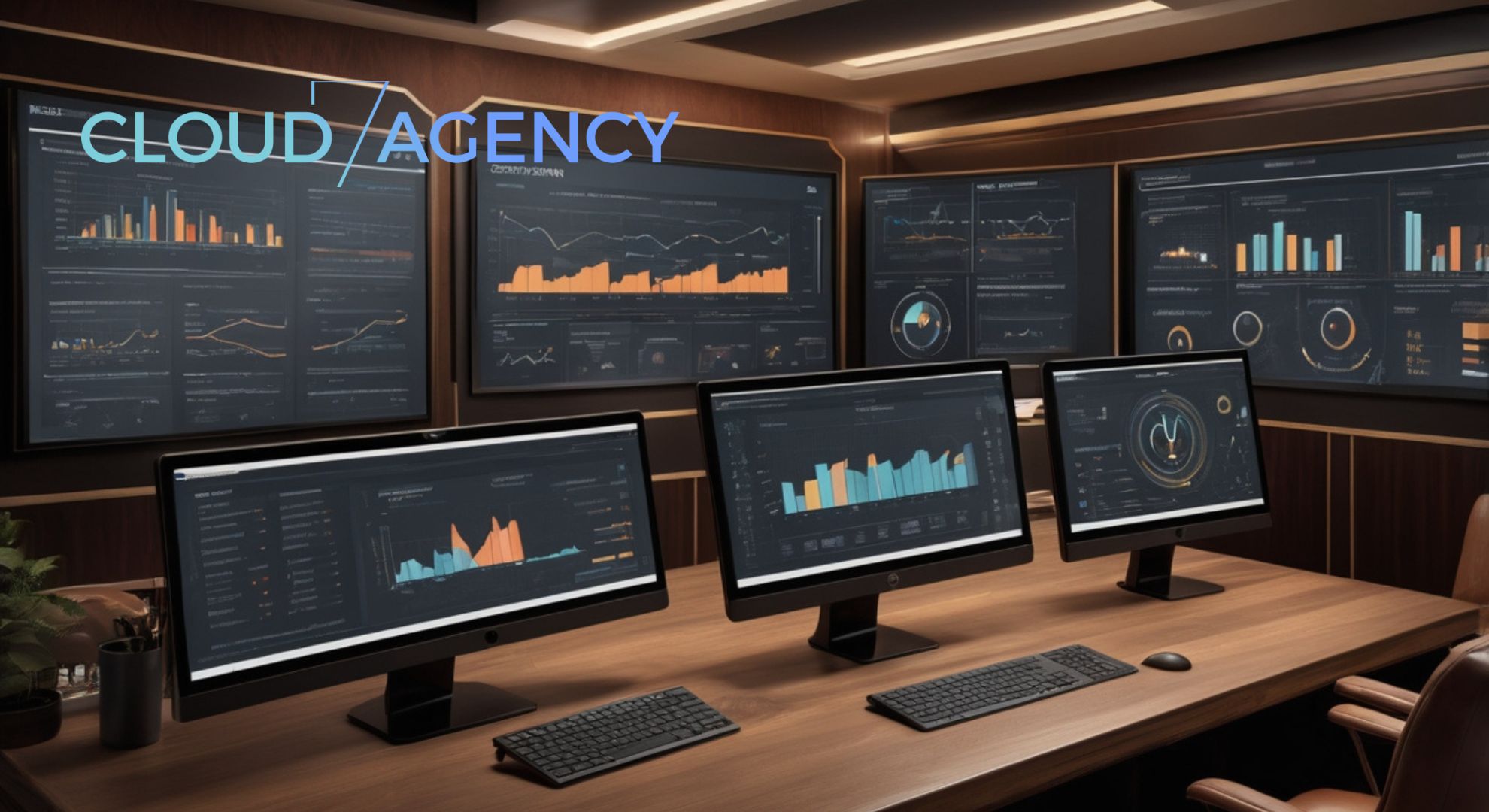The landscape of local digital marketing has undergone a revolutionary transformation with the integration of artificial intelligence and advanced analytics capabilities. Traditional measurement approaches that once relied on basic metrics like impressions and clicks are giving way to sophisticated systems that provide unprecedented insights into local campaign performance. This evolution has created new opportunities for businesses to understand their local market dynamics, customer behaviors, and campaign effectiveness with remarkable precision.
Enhanced local metrics represent the next frontier in digital marketing measurement, combining traditional performance indicators with AI-powered analytics to deliver actionable insights that drive real business results. These advanced measurement systems go beyond surface-level data to reveal the complex relationships between local market factors, customer journey touchpoints, and business outcomes. By leveraging machine learning algorithms and predictive analytics, businesses can now access granular insights about local customer preferences, seasonal trends, and competitive positioning that were previously impossible to obtain.
The importance of sophisticated measurement in local campaigns cannot be overstated in today’s competitive marketplace. Local businesses face unique challenges that require specialized analytical approaches, including varying customer demographics across different geographic areas, location-specific seasonal patterns, and the influence of local events and economic conditions on consumer behavior. Traditional analytics tools often fall short in capturing these nuances, leading to suboptimal campaign decisions and missed opportunities for growth.
Modern AI-enhanced analytics platforms address these limitations by incorporating location intelligence, real-time data processing, and predictive modeling capabilities that provide a comprehensive view of local campaign performance. These systems can identify micro-trends within specific neighborhoods, predict the impact of local events on campaign performance, and automatically adjust targeting parameters to maximize return on investment. The result is a level of campaign optimization that was previously unattainable with conventional measurement approaches.
Furthermore, the integration of multiple data sources through AI-powered analytics platforms enables businesses to create unified customer profiles that span online and offline interactions. This holistic view of customer behavior is particularly valuable for local businesses that serve customers across multiple touchpoints, from digital advertising and social media engagement to in-store visits and phone inquiries. By connecting these diverse data points, enhanced local metrics provide insights into the complete customer journey and enable more effective attribution modeling.
Key Takeaways
- Comprehensive Performance Visibility: AI-enhanced analytics provide unprecedented visibility into local campaign performance by combining traditional metrics with advanced behavioral indicators, location intelligence, and predictive insights that reveal the true impact of marketing efforts on business outcomes.
- Real-Time Optimization Capabilities: Modern measurement systems enable real-time campaign adjustments based on enhanced local metrics, allowing businesses to respond immediately to changing market conditions, competitor activities, and customer behavior patterns for maximum campaign effectiveness.
- Predictive Intelligence Integration: Advanced analytics platforms incorporate machine learning algorithms that analyze historical performance data to predict future trends, seasonal fluctuations, and optimal timing for local campaigns, enabling proactive rather than reactive marketing strategies.
- Multi-Channel Attribution Modeling: Enhanced local metrics provide sophisticated attribution capabilities that track customer interactions across all touchpoints, from initial digital exposure to final conversion, offering a complete understanding of the customer journey and campaign contribution.
- Granular Geographic Insights: AI-powered analytics deliver neighborhood-level performance data and demographic insights that enable hyper-local targeting and messaging optimization, ensuring campaigns resonate with specific community characteristics and preferences.
- Automated Reporting and Insights: Advanced measurement systems generate automated reports with actionable recommendations, reducing the time and expertise required to interpret complex data while ensuring consistent monitoring of key performance indicators and business metrics.
- Competitive Intelligence Capabilities: Enhanced local metrics include competitive analysis features that monitor market share, positioning effectiveness, and competitor campaign activities, providing strategic insights for maintaining competitive advantage in local markets.
- ROI Optimization Through Data Integration: By connecting online campaign data with offline business metrics such as foot traffic, sales conversions, and customer lifetime value, businesses can optimize their marketing investments for maximum return on investment and sustainable growth.
Understanding Enhanced Local Metrics in Modern Digital Marketing
Enhanced local metrics represent a fundamental shift from traditional marketing measurement approaches, incorporating sophisticated data collection and analysis techniques that provide deeper insights into local market dynamics and customer behavior patterns. These advanced measurement systems combine location-based data, demographic insights, behavioral analytics, and predictive modeling to create a comprehensive understanding of how local campaigns perform across different geographic areas and customer segments.

The foundation of enhanced local metrics lies in the integration of multiple data sources that were previously analyzed in isolation. Modern analytics platforms can simultaneously process data from search engines, social media platforms, display advertising networks, mobile applications, and offline sources such as point-of-sale systems and customer relationship management databases. This comprehensive data integration enables businesses to track customer interactions across the entire journey, from initial awareness through final conversion and beyond to repeat purchases and referrals.
Location intelligence forms a critical component of enhanced local metrics, providing insights that go far beyond basic geographic targeting. Advanced systems can analyze factors such as local economic conditions, demographic trends, seasonal patterns, weather influences, and even local events that may impact campaign performance. This level of granular analysis enables businesses to understand why certain campaigns perform differently across various locations and adjust their strategies accordingly.
The temporal dimension of enhanced local metrics adds another layer of sophistication to campaign measurement. AI-powered analytics can identify patterns in customer behavior that occur at specific times of day, days of the week, or seasons of the year, enabling businesses to optimize their campaign timing for maximum impact. These insights are particularly valuable for local businesses that may experience significant variations in customer demand based on local factors such as school schedules, work patterns, or seasonal activities.
AI-Powered Data Collection and Processing Systems
The backbone of enhanced local metrics lies in sophisticated AI-powered data collection and processing systems that can handle vast amounts of information from diverse sources while maintaining accuracy and providing real-time insights. These systems employ machine learning algorithms that continuously improve their analysis capabilities by learning from historical data patterns and adapting to changing market conditions and customer behaviors.
Modern data collection systems utilize advanced tracking technologies that can capture customer interactions across multiple devices and platforms while maintaining privacy compliance and data security standards. These systems can track customer journeys that span from mobile device searches to desktop website visits, social media engagement, and ultimately to in-store purchases or service appointments. The ability to connect these disparate touchpoints provides a complete picture of customer behavior that enables more accurate attribution and campaign optimization.
Real-time data processing capabilities represent a significant advancement over traditional analytics approaches that often relied on delayed reporting and historical analysis. AI-enhanced systems can process incoming data streams continuously, identifying trends and anomalies as they occur and automatically triggering alerts or campaign adjustments when performance metrics deviate from expected ranges. This real-time capability is particularly valuable for local businesses that need to respond quickly to changing market conditions or competitive activities.
The predictive analytics component of AI-powered systems adds a forward-looking dimension to campaign measurement that enables proactive rather than reactive marketing strategies. These systems can analyze historical performance data alongside external factors such as weather forecasts, local events, economic indicators, and seasonal trends to predict future campaign performance and recommend optimal strategies for upcoming periods. This predictive capability helps businesses allocate their marketing budgets more effectively and prepare for anticipated changes in customer demand.
Data quality and accuracy represent critical factors in the effectiveness of AI-powered measurement systems. Advanced platforms employ multiple validation techniques to ensure data integrity, including cross-referencing information from multiple sources, identifying and filtering out bot traffic or fraudulent interactions, and applying statistical models to detect and correct for data anomalies. These quality assurance measures are essential for maintaining the reliability of enhanced local metrics and ensuring that business decisions are based on accurate information.
Advanced Performance Measurement Techniques
Advanced performance measurement techniques in enhanced local metrics go beyond traditional conversion tracking to incorporate sophisticated analytical methods that provide deeper insights into campaign effectiveness and customer behavior. These techniques leverage statistical modeling, machine learning algorithms, and behavioral analytics to uncover patterns and relationships that would be impossible to detect through conventional measurement approaches.

Multi-touch attribution modeling represents one of the most significant advances in performance measurement, enabling businesses to understand the contribution of each touchpoint in the customer journey rather than attributing conversions solely to the last interaction. Advanced attribution models can account for the varying influence of different channels and touchpoints based on their position in the customer journey, the time elapsed between interactions, and the specific characteristics of individual customers. This sophisticated approach to attribution provides more accurate insights into campaign performance and enables better budget allocation decisions.
Cohort analysis techniques allow businesses to track the long-term performance of customer groups acquired through different campaigns or channels, providing insights into customer lifetime value and retention patterns that extend far beyond initial conversion metrics. These analyses can reveal how local factors such as seasonal patterns, economic conditions, or competitive activities influence customer behavior over time, enabling businesses to develop more effective long-term marketing strategies.
Incrementality testing represents another advanced measurement technique that helps businesses understand the true impact of their marketing efforts by comparing performance in test markets where campaigns are active versus control markets where campaigns are paused or modified. These tests provide definitive evidence of campaign effectiveness and help businesses avoid the common pitfall of attributing organic growth or external factors to their marketing activities.
Cross-channel performance analysis enables businesses to understand how different marketing channels work together to drive results, identifying synergies and optimization opportunities that might not be apparent when analyzing channels in isolation. Advanced measurement systems can detect how exposure to one channel influences performance in another, enabling businesses to optimize their channel mix for maximum overall effectiveness rather than optimizing individual channels independently.
Real-Time Analytics and Automated Optimization
Real-time analytics capabilities have revolutionized the way businesses approach local campaign management by enabling immediate response to performance changes and market conditions. These systems continuously monitor campaign performance across all channels and touchpoints, providing instant visibility into metrics such as engagement rates, conversion patterns, cost efficiency, and audience response. The ability to access this information in real-time enables businesses to make immediate adjustments that can significantly impact campaign outcomes.
Automated optimization features represent the next evolution in campaign management, utilizing machine learning algorithms to make continuous adjustments to targeting, bidding, creative selection, and budget allocation based on real-time performance data. These systems can respond to performance changes much faster than human analysts, making hundreds of micro-adjustments throughout the day to maintain optimal campaign performance. The automation capabilities extend beyond simple rule-based adjustments to include sophisticated decision-making that considers multiple variables and their interactions.
Alert systems and anomaly detection capabilities ensure that businesses are immediately notified of significant changes in campaign performance or market conditions that require attention. These systems can distinguish between normal performance fluctuations and genuine issues that require intervention, reducing false alarms while ensuring that critical problems are addressed promptly. Advanced alert systems can even provide recommended actions based on similar situations encountered in historical data.
Dynamic creative optimization represents a powerful application of real-time analytics that enables automatic testing and optimization of advertising creative elements based on audience response and performance data. These systems can test different combinations of headlines, images, calls-to-action, and other creative elements, automatically promoting the best-performing variations while continuing to test new options. This continuous optimization process ensures that campaigns always feature the most effective creative combinations for each audience segment.
Budget optimization algorithms can automatically redistribute campaign budgets across different channels, geographic areas, and audience segments based on real-time performance data and predicted outcomes. These systems consider factors such as audience availability, competitive intensity, and conversion probability to ensure that budget allocation maximizes overall campaign effectiveness. The ability to make these adjustments in real-time prevents budget waste and ensures that opportunities are captured as they arise.
Integration with Business Intelligence and CRM Systems
The integration of enhanced local metrics with existing business intelligence and customer relationship management systems creates a unified view of business performance that connects marketing activities with broader business outcomes. This integration enables businesses to understand not just how their campaigns are performing from a marketing perspective, but how those campaigns are contributing to overall business objectives such as revenue growth, customer acquisition, and market share expansion.

Customer data platform integration allows businesses to combine campaign performance data with detailed customer profiles that include purchase history, service interactions, support tickets, and other touchpoints that occur outside of marketing channels. This comprehensive customer view enables more sophisticated segmentation and personalization strategies while providing insights into the long-term value of customers acquired through different marketing channels and campaigns.
Sales pipeline integration provides visibility into how marketing campaigns influence not just initial lead generation but also progression through the sales process and ultimate conversion to customers. This integration is particularly valuable for businesses with longer sales cycles or complex purchase processes, enabling them to optimize their marketing efforts for qualified lead generation rather than just initial interest or engagement.
Financial system integration enables direct calculation of marketing return on investment by connecting campaign costs with actual revenue generation and profit margins. This integration provides the financial accountability that business leaders require while enabling marketing teams to demonstrate the concrete business value of their activities. Advanced systems can even account for factors such as customer lifetime value and retention rates to provide a complete picture of marketing ROI.
Inventory and operational system integration allows businesses to align their marketing activities with operational capacity and product availability. These integrations can automatically adjust campaign intensity based on inventory levels, service capacity, or seasonal operational constraints, ensuring that marketing efforts don’t generate demand that cannot be fulfilled. This alignment between marketing and operations is particularly important for local businesses that may have limited capacity or seasonal availability constraints.
Frequently Asked Questions
What makes enhanced local metrics different from traditional analytics? Enhanced local metrics incorporate AI-powered analysis, location intelligence, predictive modeling, and multi-source data integration to provide deeper insights into local market dynamics and customer behavior patterns that traditional analytics cannot capture.
How do AI-enhanced analytics improve local campaign performance? AI-enhanced analytics enable real-time optimization, predictive trend analysis, automated bid management, and sophisticated attribution modeling that help businesses respond faster to market changes and optimize their campaigns for maximum local impact and return on investment.
What types of data sources are integrated in enhanced local metrics systems? These systems integrate data from search engines, social media platforms, display networks, mobile apps, point-of-sale systems, CRM databases, weather services, local event calendars, and economic indicators to provide comprehensive market insights.
How can small local businesses benefit from advanced analytics capabilities? Small businesses can leverage automated optimization features, predictive insights for budget planning, competitive intelligence, and simplified reporting dashboards that provide enterprise-level analytics capabilities without requiring extensive technical expertise or resources.
What role does predictive analytics play in local campaign planning? Predictive analytics analyze historical performance data alongside external factors to forecast future trends, optimal timing, budget requirements, and expected outcomes, enabling proactive campaign planning and more effective resource allocation for local marketing efforts.
How do enhanced local metrics handle privacy and data compliance requirements? Advanced systems incorporate privacy-by-design principles, implement data anonymization techniques, provide granular consent management, and maintain compliance with regulations such as GDPR and CCPA while still delivering valuable insights for campaign optimization.
What is the typical implementation timeline for AI-enhanced analytics systems? Implementation timelines vary based on business complexity but typically range from 4-12 weeks, including data integration, system configuration, team training, and optimization setup, with many benefits becoming apparent within the first month of deployment.
How do businesses measure the ROI of investing in enhanced local metrics capabilities? ROI measurement includes factors such as improved campaign performance, reduced manual analysis time, better budget allocation efficiency, increased customer acquisition rates, and enhanced customer lifetime value, with most businesses seeing positive returns within 3-6 months of implementation.
Conclusion
The evolution toward AI-enhanced analytics and enhanced local metrics represents a fundamental transformation in how businesses approach local marketing measurement and optimization. Organizations that embrace these advanced capabilities gain significant competitive advantages through deeper market insights, more effective campaign optimization, and better alignment between marketing activities and business outcomes. The integration of artificial intelligence, machine learning, and sophisticated data processing enables a level of precision and responsiveness that was previously unattainable with traditional measurement approaches.
The future of local marketing measurement lies in the continued advancement of these technologies, with emerging capabilities such as advanced predictive modeling, automated strategy development, and increasingly sophisticated attribution analysis. Businesses that invest in enhanced local metrics capabilities today position themselves to capitalize on these future developments while immediately benefiting from improved campaign performance and more effective resource allocation.
Success in implementing enhanced local metrics requires a strategic approach that considers not just the technology capabilities but also organizational readiness, data quality, and integration with existing business processes. Companies like C7A specialize in helping businesses navigate this transformation, providing the expertise and support necessary to maximize the value of advanced analytics investments while ensuring smooth integration with existing marketing and business systems.
The investment in AI-enhanced analytics and performance measurement capabilities represents more than just an upgrade to existing marketing tools; it represents a strategic commitment to data-driven decision making and continuous optimization that can drive sustainable business growth. As local markets become increasingly competitive and customer expectations continue to evolve, the businesses that thrive will be those that leverage enhanced local metrics to understand their markets deeply and respond with precision and agility.

